Paint or Lacquer
I am building my Kitchen cabs and was looking into how I want to finish them. White or clear coat.
Driving myself crazy actually..
I Went to BM and Sher Will. I asked what "white Paint" is best for kitch cabs. They both said lacquer........
This forum seems to be big on white painted cabs. That said, I have run across a lot of posts where people say 'painted' and it turns out they have pigmented lacquer.
I like the look of clear lacquer. But, I'm not sure I even know what white lacquer looks like. I've never used white lacquer. For some reason I think of thermofoil when I think of white lacquer.
Anyway, so, are you all really painting your cabs?
Any words of wisdom that you think of would be appreciated.
Thanks
Comments (28)
SaltLife631
10 years agoMy personal cabinets as well as crown moulding were just sprayed with a specially formulated 40 sheen lacquer to match BM White Dove. For the ceiling and the trim in the same room we used BM Impervo or Advance in White Dove, I would have to look to see which. While the two colors match nicely the lacquer is a harder more durable finish that is better suited for the rigors of cabinet use. The finish does not look like thermofoil in the least. The following is a post where you can see my cabinets.
http://ths.gardenweb.com/forums/load/kitchbath/msg081425281125.html?6
Feel free to let me know if you have any other questions.
Related Professionals
Amherst Kitchen & Bathroom Designers · Clarksburg Kitchen & Bathroom Designers · East Peoria Kitchen & Bathroom Designers · Lockport Kitchen & Bathroom Designers · New Castle Kitchen & Bathroom Designers · Saint Peters Kitchen & Bathroom Designers · Salmon Creek Kitchen & Bathroom Designers · Southampton Kitchen & Bathroom Designers · West Virginia Kitchen & Bathroom Designers · Garden Grove Kitchen & Bathroom Remodelers · Mooresville Kitchen & Bathroom Remodelers · Schiller Park Kitchen & Bathroom Remodelers · Warren Kitchen & Bathroom Remodelers · Weston Kitchen & Bathroom Remodelers · Indian Creek Cabinets & Cabinetrytbo123
Original Author10 years agoThanks Saltlife.
You have done a great job. Your kitchen is beautiful.
From your posting I can tell that you too have spent many hours reading the trials and travails on this website. My eyes sometimes feel like they are going to fall out of my head, since they are so tired from reading and researching for my remodel.
I am glad you stepped forward to answer my post and you have more or less confirmed what I was thinking in that posters refer to any coating as paint. Thank You.
You have just told me that your cabinets were sprayed with lacquer but the post you linked to you said:
"Cabinets: The lowers are natural walnut with no stain and the uppers are painted Benjamin Moore White Dove (OC-17). "This is my confusion.
I hope some others will respond and tell me what they "painted" their cabs with. And, if they refer to a lacquer finish as 'painted'.
I'm sorry if this comes off as harsh. I don't mean it to. I'm just really frustrated.
Thanks again Saltlife.
breezygirl
10 years agoLacquer used to color cabinets is not thermafoil-ish. It is a durable finish, but isn't as easily touched up as actual paint is. Yes, people do tend to say "paint" when their cabs may actually have been varnished or lacquered.
My cabs were painted with a sprayer in BM Satin Impervo Waterborne as my cab maker only used regular paint at the time he built my cabs. He has now switched to lacquer so my future cabs/built-ins from him will be different.
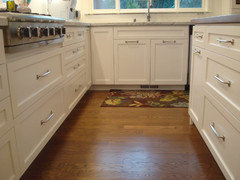
If you search around the forum (use an Internet search, not the search engine here), you'll find lots of discussions of paint vs lacquer vs conversion varnish. I'll link some good info from a thread I saved. If you scroll to the bottom, you'll find Sparklingwater's helpful post.
Edited to add the missing link!
Here is a link that might be useful: Thread with lacquer info
This post was edited by breezygirl on Fri, Sep 6, 13 at 17:17
SaltLife631
10 years agoI believe the terms are often used interchangeably because of the application process not the material itself. Lacquer is available for application by brush or as a spray similar to paint and often times the colors being referred to are in fact paint colors such as White Dove. As a result "painted" tends to be the go to verbiage. with that said there are definitely people out there who use paint as a finish for their cabinets. The lacquer finish will dry fast and give you a smooth finish. If you choose to go this route you will want to work in thin coats. Their is a resin in most lacquers today that will allow one thin coat to sort of melt into the previous coat. When you build the coats up like this you will be left with a hard finish that still possess a certain level of flexibility. No worries at all I am glad I could help. Let me know if you have any questions when the finishing begins that is when the fun starts!
This post was edited by SaltLife631 on Fri, Sep 6, 13 at 17:26
localeater
10 years agoI am sure I am guilty of having stated that I have a painted island, it is not painted. It was sprayed with Catalyzed Lacquer.
From GW Photos
kai615
10 years agotbo-I am very glad you asked the question and have been searching for the past 2 weeks myself for the same answer. I was going to say so after you posted, but didn't want to bump your post from the top.
I am about to undertake our DIY cabinet finishing and all I keep seeing is "painted". To be honest, until you asked the question (I have not actually gone to SW yet to get paint and my SW is not that on the ball anyway) I had not heard anyone even say lacquer yet. I was concerned with which paint people were using and if I should apply a top coat of polycrylic over the paint to make it more scrub-able.
So here is my add on question. I am not painting (or lacquering) in white it will be pale yellow and green. I am not sure that makes a difference or not. I do not have the ability to spray and must use a brush or roller to apply. I obviously want the best finish and am willing to take the time needed to get it. Which would the good DIYers of GW recommend using?
tbo123
Original Author10 years agoKali. Yea, the confusion continues. Unfortunately, a lot if not most pros refer to anything pigmented as paint. I think it should be outlawed myself:)
As far as your job goes, since you say "finishing" and not 're-finishing', (meaning raw wood) which would probably make it likely that the cabs are not installed, I would put them in the backyard, rent a sprayer and spray them.
If you can't, I think it's all about the prep, the paint, the primer, and the technique. Not whether or not it's a brush or roller. (But, you would probably need both.) You might look into preval sprayers also.illinigirl
10 years agolocaleater:
how has your catalyzed laquer held up over time?
does it chip or wear? how is cleanup?
have you had to retouch and how does that go?baltomom_gw
10 years agoI'm reading this thread with interest, as I'm going to be painting the doors of my cabinets myself. I can't spray for a variety of reasons, so will be painting them in my basement. I was planning on using a self-leveling paint like BM Advance or Cabinet Coat. I'll use a brush or roller. Has anyone done this with success? I have a country kitchen, so imperfection is OK, but I'd like the finish to be durable as the kitchen gets a lot of use. I also have bad allergies, so the paint/lacquer has to be low smell and low VOC. I'm going to test the Advance and Cabinet Coat to see if I can tolerate the smell. I will spend the time I need to do the job correctly, but I have to do it by hand.
Any feedback most welcome. I'm painting my cabinets a light green, not white.
tbo123
Original Author10 years agobreezygirl.
That's some purty cabs...
How old is the finish? Any cracking?
Do you know if he used an airless or HVLP sprayer?
Also, it appears he caulked where the panel meets the stiles and rails. Is that working out good?Thanks
live_wire_oak
10 years agoMost cabinet companies spray a full opaque tinted catalyzed lacquer, and they do it in a high quality paint booth with downdraft ventilation. It's quick drying, and quick cured in an oven. There's also a clear coat on top that's also oven cured. The products that they use aren't feasibly obtained by the home painter though. They're expensive, and not available in consumer quantities.
You simply can't get the same durability and results from a home applied job, even using lacquer. The products are similar, but not the same. And without an experienced spray applicator and at least a home made dedicated spray booth and a respirator (preferably supplied air), you're chasing your tail as far as application quality here. Will it be good enough quality for your standards? Only you can answer for the amount of time and money that you are willing to spend to acquire the skill to do that.
One of the primary reasons people choose to buy cabinets from a company has to do with the durability of the finishes from the factory. Look up KCMA testing if you want to know what they have to endure to earn that seal. No home made cabinets can pass those tests!
No reputable maker EVER uses caulk in any cabinet construction. Panels have to float free to account for the expansion and contraction of the wood.
If you want to minimize the amount of unpainted surface shown during the change of the seasons (not much to begin with), then spray all of the stick and cope pieces and the panel separately before doing your joins for the door. It's VERY labor intensive to do though, and much more difficult to get a good quality paint application on pieces without hanging them individually in a good quality paint booth. And it takes a LOT of time. 5-6x the time it takes to finish your doors.
There is also the other school of thought that uses actual paint, hand applied with a brush. That school prefers the brush marks that would have been on the traditional cabinets of old, and are OK with the cabinets looking like a human painted them. No lacquer, no topcoating. Just plain good quality paint and a steady hand. That's much easier for a homeowner to accomplish, as perfection isn't the goal from the beginning.
With the popular vibe being away from traditional interiors and more towards transitional ones, you don't see as much of this type of finish application as you used to though. But for those who prefer this aesthetic, other options like milk paint or soy based paints are sometimes an option to give a more "hand crafted" look. This type of look, because it doesn't rely on "perfection", is often easier to touch up by the homeowner, as doing a brush touchup blends into the other brushmarks already existing. Doing a touchup up in sprayed lacquer cabinets require much more finesse.
kai615
10 years agoI appreciate the info live wire. We are more of the traditional school of thought here. We are doing the kitchen the way we are and DIYing the finish in our own paint finish to keep from the plastic look I think you get from the pre-finished cabs, so I might as well go all the way with the brush strokes. I do have a steady hand and I can completely see how it would add charm to the kitchen.
tbo123
Original Author10 years agoGood info live wire.
I do beg to differ however. Many cabinet makers use caulk.
The idea that the panel has to float is true only for solid wood. Plywood and mdf panels can be glued, pinned, caulked.I also think a pretty decent finish can be applied at home using HVLP and quality pre-cat lacquers. I've done it. I really don't want to do it again though. which is why I am looking for different waterbased alternatives.
rosylady
10 years agoLWO: a hand painted finish is considered a high end finish in my neck of the woods. Sprayed cabinets are almost never well integrated into a room with a lot of moulding, wainscoting, and trim detail. I'm not saying never, but in most even high end kitchens you can see the difference in the color/application between the two.
Site finished cabinets and floors are now being seen as high end, luxury finishes. And they are. It costs a lot more more and takes more time and effort.
tbo123
Original Author10 years agoHi rosy.
" a hand painted finish is considered a high end finish in my neck of the woods. "That's very interesting. Where are your 'woods'?....:)
User
10 years agoPlenty of people prefer a hand brushed finish, with it's subtle imperfections that they don't view as imperfections. It's wabi sabi. There is no absolute right way of getting painted cabinets, unless you're talking gloss slab with a hand rubbed lacquer finish. That's kinda the only way of getting that look. There's always a tradeoff to any process. Factory finished cabinets are more durable longer, but many people feel they look like "plastic" and are difficult to touch up. Hand brushed cabinets can have site debris and brush marks in them, but are more "authentic" and are easier to touch up. Decide which method works for you. But, I don't think I'd be home spraying unless I like the smoother look of sprayed cabinets and had a light use environment. It's kinda the worst compromise as far as durability and looks go for most people.
No true custom guy worth his salt would ever think about such heresy as caulking a panel. That's a hack's method to account for poor workmanship.
tbo123
Original Author10 years ago"No true custom guy worth his salt would ever think about such heresy as caulking a panel. That's a hack's method to account for poor workmanship."
I think breezygirl's cabs above^ look pretty good. The panels sure appear caulked to me. If I could snap my fingers and that was my kitchen, I would. But, I do understand a "true custom guy" might have different ways of doing things.
breezygirl
10 years agoOuhhh...I missed the excitement today. :)
My cabs are not caulked. My cab maker gave the same reasons as LWO for not doing it. My cab maker, for better or worse, only uses solid wood.
As far as cracking goes, I have some separating at the seam where the stiles/rails meet the panel in a couple of places. First to go was false drawer front on the cleanup sink base. I have a couple of decent dents on a couple of panels, but the paint has not cracked there. Just the dent. There are a couple of small chips in the paint on the top front edge of the garbage pullout. I'll try to touch up those chips this fall, although I'm not looking forward to doing it. At least I have a can of the paint in my garage so it shouldn't be complicated.
I'm a bit south of Rosylady. I can guess on which island she lives and can believe that a hand painted finish is considered high-end there. My climate is fairly humid (semi-rainforest), but we do have a heat pump for summer cooling. Not sure how/if that affects my painted cabs.
I have no idea what kind of sprayer my cab maker's painter used. I don't think she is very high-tech so maybe airless? The finished cabs were absolutely beautiful and looked amazing.
For me, the ability to get completely custom cabs from a local craftsperson at a cheaper price outweighed the possibility of getting a more durable finish in the more expensive semi-custom lines I priced. I could not afford a factory-made custom cab line. I love my cabs, but know that the actual painted-out-of-a-can-of-paint finish won't hold up as well as the Diamond cabs I could have purchased.
Lori
7 years ago@breezygirl What color are your cabinets? Do you have a link for the new lacquer cabinets you had made? Thank you.
Kevin Piazzisi
7 years agoNew to the forum, but not painting. I have painted cars as a hobbyist for several decades. We would go the the automotive paint store back in the 1980's and ask the guy behind the counter for a gallon of "Jet black". He would ask if we wanted it in dupont Laquer, PPG Deltron urethane, some other acrylic enamel, etc. All of it was considered "Paint". Nobody got their panties in a wad for thinking about lacquer as a paint.
Years ago all the show cars were painted in lacquer because it has a "mirror" like finish. In the auto body/painting world we don't want what is called "orange peel". Lacquer lays down real nice with minimal orange peel. As time progressed more and more people were switching from lacquer to urethane or Polyurethanes because the lacquers tend to not be very durable. Not durable, not flexible, not resistant to chipping, and does not withstand UV very well. It is interesting to here people on here talk about how they are seeing a crack develop on a seam of their lacquer "finished" cabinet. As someone who has been in the automotive paint industry, this does not surprise me.
In recent years the urethanes have gotten so easy to apply and have almost the same finish (little orange peel) right out of the gun, that almost no one uses lacquer any more. I wonder why cabinet makes/ refinishes do not switch to a two part catalyzed urethane automotive product.
Kevin Piazzisi
7 years agolast modified: 7 years agoI have painted a lot of fiberglass boats in my time. They are not metal either. I really don't think the substrate matters that much. Once the substrate is sealed, the top coat really doesn't care if it's wood, metal, fiberglass, etc. I wonder why there is not a catalyzed urethane marketed for wood cabinets. I know there are some guys on the autobody forum that are using a 2K urethane auto primer with an automotive catalyzed urethane paint on interior cabinets. They apply with a typical HVLP driven by an air compressor. My guess would be that it would be a superior finish to all these outdated lacquer products that will inevitably crack and chip at some point. Nothing is made to last forever, so car paint indoors away from UV will probably outlast the trend to have white cabinets. I am sure in a few years people will be trying to figure out how to strip the white off and go back to the natural wood grain. Just like we wonder why people put shag carpet over hardwood floors, I am sure years from now people will wonder why we ever put an opaque finish over beautiful hardwood.
Design Loft Bracebridge
7 years agolast modified: 7 years agoLacquer can be clear or coloured. For the coloured, a pigment is added basically the same way you mix a paint. You have a base, light or dark and colourant is added to a 'recipe', blacks, browns, reds, yellows, etc. In my past, I was a custom cabinet manufacturer, I'm a Cabinetmaker by trade. When a customer wanted a 'painted' finish, I would have them choose a colour from the paint brands, Ben Moore, Sherwin, even Home Depot. I would then take the paint chip to my lacquer supplier and he would generate a formula the same way you would if you took a paint chip to have a paint mixed. It's just different products.
For a DIY'er you can buy a cup gun at the home improvement/hardware store, and then find a finish supplier who sells lacquer. You can buy a pre-catalyzed (one that has the hardner added at time of purchase), have it tinted to the colour you want, and spray it yourself. However, lacquer is volatile (unless you use a water-based) and for that reason you need to use it in a well ventilated. free from spark area. To be honest, I wouldn't recommend it for the average person to do just because of it's volatile make-up. If you did find a water-based lacquer, you would be a lot safer and it would be better for the environment if you're using it without a proper filtration booth. Although, water-based lacquers are more finicky to work with. Spraying also takes quite a bit of finesse and talent to properly achieve the best look, but it can be done by a DIY'er. Every finisher started off with not knowing anything about finish but with practice, became proficient. It's all about practice and patience.
As far as cracking goes, the only time I've seen lacquer crack is when it wasn't applied or mixed properly. Too thick and it will definitely crack. Too much hardner and it will crack. You don't want lacquer to pool in areas where the wood moves such as around the inner perimeter of a panelled door. Lacquer is meant to be applied in thin layers and even when the last layer is applied, it's only so many 'mils' thick.
dan1888
7 years agolast modified: 7 years agoGeneral Finishes has a very high quality water born post catalyzed conversion varnish and White Poly, Clear Poly and Classic Paint tint bases that can be color matched to all popular commercial color fan decks- SW, BM etc.
They recommend their Clear Poly because it's water clear as a topcoat over whites.
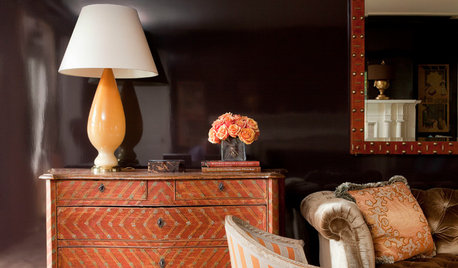
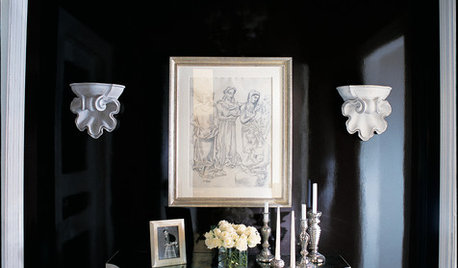
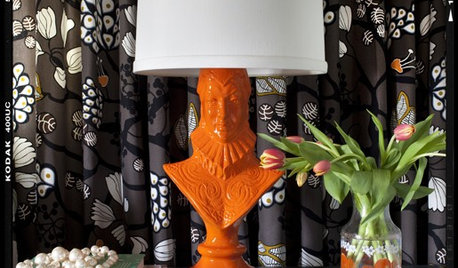
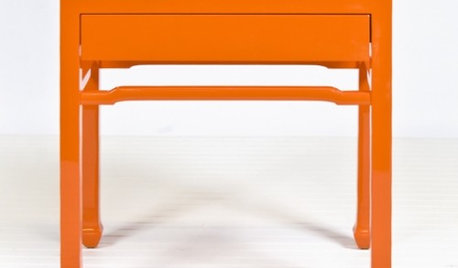
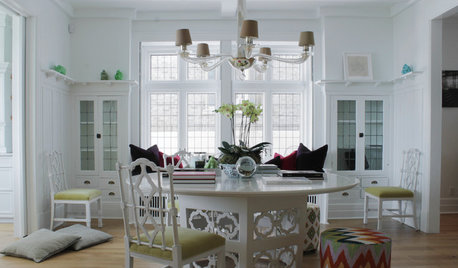
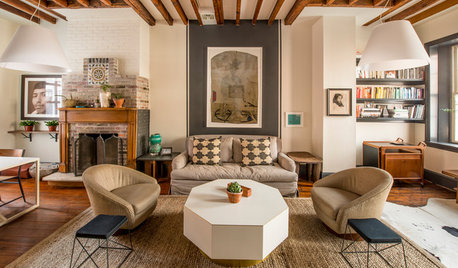

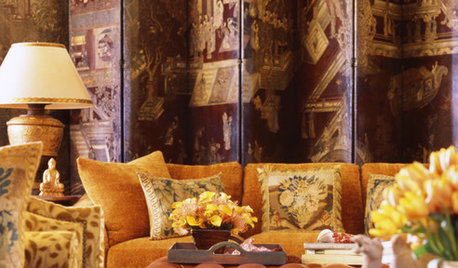
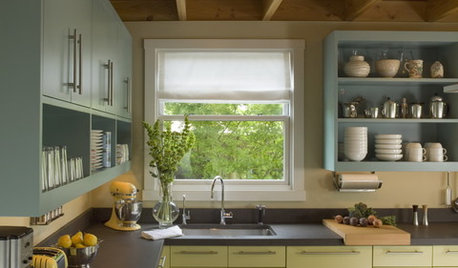
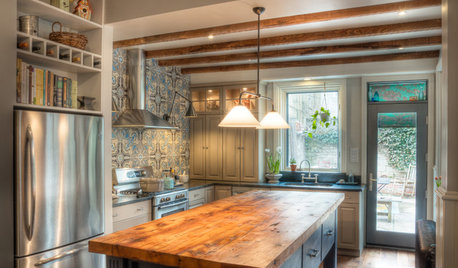






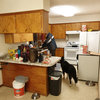



tbo123Original Author